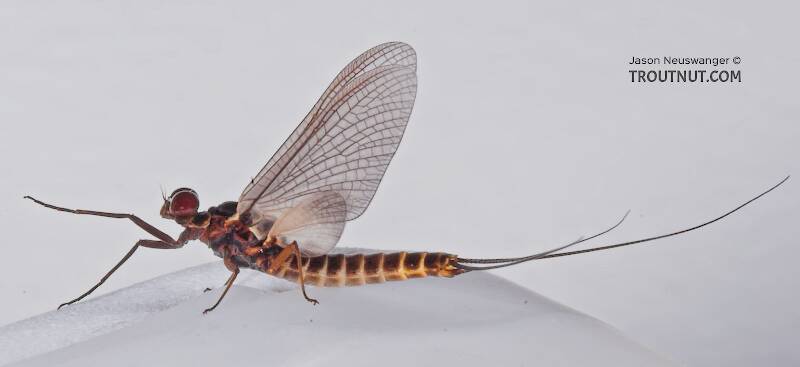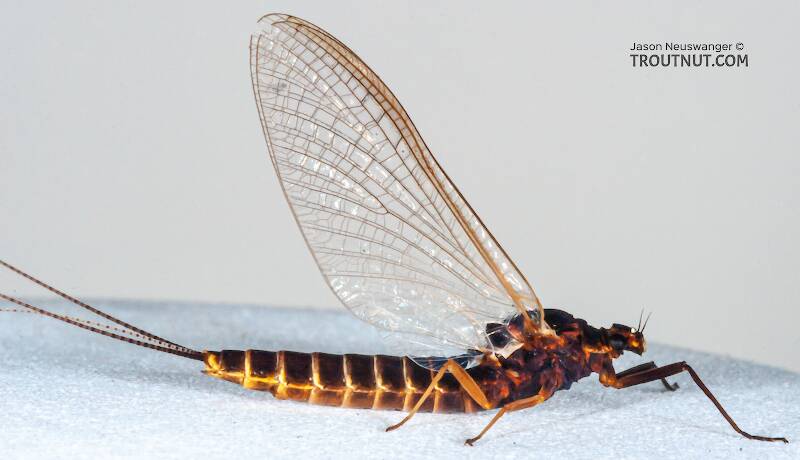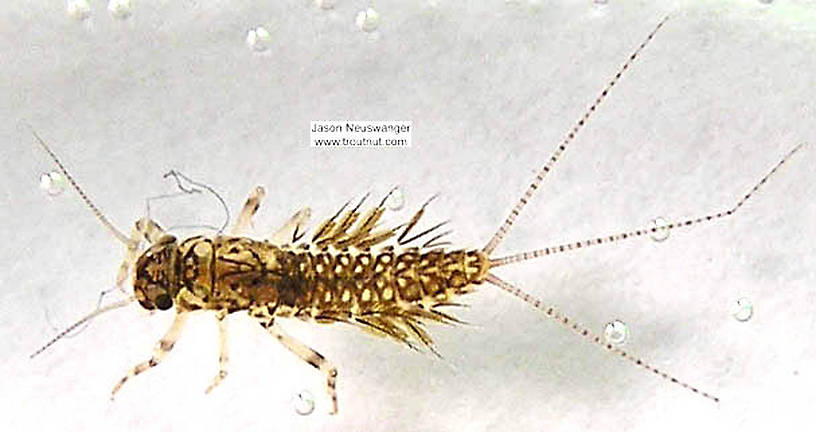
Blue-winged Olives
Baetis
Tiny Baetis mayflies are perhaps the most commonly encountered and imitated by anglers on all American trout streams due to their great abundance, widespread distribution, and trout-friendly emergence habits.
Featured on the forum

Troutnut is a project started in 2003 by salmonid ecologist Jason "Troutnut" Neuswanger to help anglers and
fly tyers unabashedly embrace the entomological side of the sport. Learn more about Troutnut or
support the project for an enhanced experience here.
Early Black Quills
Like most common names,"Early Black Quill" can refer to more than one taxon. They're previewed below, along with 3 specimens. For more detail click through to the scientific names.
Mayfly Genus Leptophlebia
These are sometimes called Early Black Quills.
Leptophlebia mayflies do not generate superhatches, but their medium-large size and other properties make them a relevant part of the early season.
The information below was mostly discovered in Leptophlebia cupida, the most important species, but it is not known to differ in the others.
The information below was mostly discovered in Leptophlebia cupida, the most important species, but it is not known to differ in the others.

This Leptophlebia cupida dun was extremely cooperative, and it molted into a spinner for me in front of the camera. Here I have a few dun pictures and one spinner picture, and I've put the entire molting sequence in an article.
See 17 more specimens...
Mayfly Species Leptophlebia nebulosa
These are sometimes called Early Black Quills.




